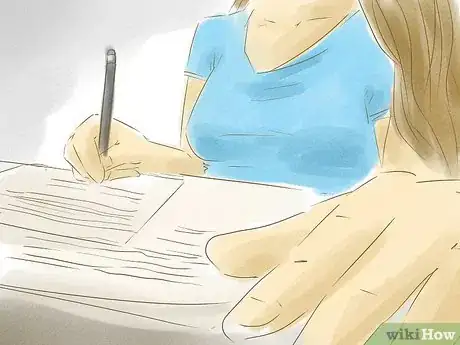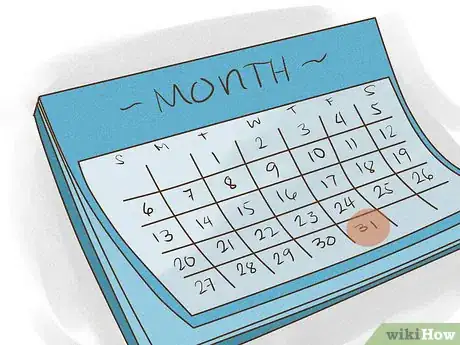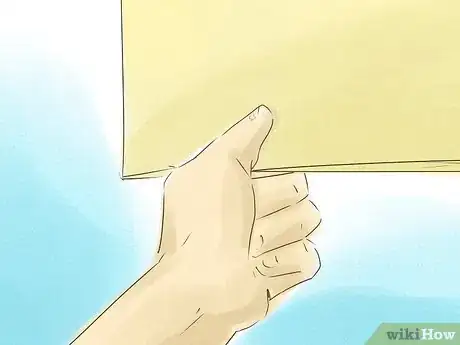This article was co-authored by wikiHow Staff. Our trained team of editors and researchers validate articles for accuracy and comprehensiveness. wikiHow's Content Management Team carefully monitors the work from our editorial staff to ensure that each article is backed by trusted research and meets our high quality standards.
This article has been viewed 70,056 times.
Learn more...
Voting is a privilege, but you might want to cancel your registration for a variety of reasons. For example, you might be moving and intend to register in your new state or country. To cancel, you should contact the appropriate elections office and request that your name be removed from the voter rolls. You may need to fill out some paperwork. Once you cancel your registration, remember to register in your new domicile.
Steps
Removing Your Name from the Voter Rolls
-
1Find the appropriate elections office to contact. Every jurisdiction has an office that maintains voter rolls. This office might be at the local, state, or federal level, depending on your country. Search online for “board of elections” or stop into your local government office and ask.
- In California, for example, you'll need to contact your county elections office.[1]
-
2Contact the office. Find a phone number and call. Tell the person on the other end that you want to cancel your voter registration. Ask them about the process. They may send you a form to fill out or point you to the website where you can submit your request.Advertisement
-
3Submit your request. Your jurisdiction might have a form you need to fill out to cancel your registration. You will probably need to provide personal information, such as your name, birth date, age, gender, driver's license, and the address where you were registered to vote.[2]
- In some jurisdictions, you might need to send a letter. Ask ahead of time what to include in the letter. Generally, you'll probably request that your registration be cancelled and provide your personal information.
- In some places, such as Colorado, you might be able to submit a request online.[3]
-
4Confirm your name has been removed. Your jurisdiction might send you written notice when your name has been removed from the voter rolls. If you don't receive anything after a month, call up the office to check.
Registering in Your New Home
-
1Meet residency requirements. Check the laws, which you can find online. Some jurisdictions require that you have lived there for a minimum amount of time, such as 30 days.
- However, other places only require that you be “domiciled,” which means you intend to stay. These jurisdictions have no minimum amount of time that you must have lived there. For example, you can be domiciled in as little as one day if you intend to make your home in that place.[4]
-
2Satisfy other requirements. Every state, territory, or country sets its own voting requirements. In most U.S. states, for example, you must meet the following in order to register:
- Have no felony convictions. Most U.S. state strip felons of their voting rights. You'll need to ask that those rights be restored before you can register.
- Meet the minimum voting age. In the U.S., 18 is the minimum age. In a few places, you can register to vote in primaries if you are 17.[5]
-
3Gather acceptable identification. To register for the first time, you'll need to provide certain personal identification. For example, in the U.S., most states will require either your driver's license number or identification card. If you don't have either, then you'll need to provide the last four digits of your Social Security Number.
-
4Check the deadline. Each jurisdiction sets its own deadline for when you must register if you want to vote in an upcoming election. In the U.S., many states require that you register at least 30 days before the election, but some allow same day in-person registration. You can find the deadline by calling your elections office.
-
5Register in person. Go to your state or local election office and ask to register. You might also be able to register in person at other government facilities, such as the Department of Motor Vehicles or at public assistance offices.[6]
- Call ahead of time to check hours and remember to take your personal identification.
-
6Look for other ways to register. Many states and countries have made it easier to register, so you might be able to register online or through the mail. Call your local elections office and ask about alternative methods of registering.
- In the U.S., you can register online in 31 states and the District of Columbia.[7] You can find the website by searching for your state and “register to vote.”
- You might also download the National Mail Voter Registration Form. You can print it out and complete the information by hand or enter your information directly into the PDF. You'll need to sign the form and submit it to your state's designated office. Nearly every state accepts the form.
Community Q&A
-
QuestionI have cancelled my duplicate voter ID. How do I know it is cancelled or not?
 SylviaMoonCommunity AnswerYour state will let you know via email or a letter. If you haven't received a form of written confirmation yet, call the office to ask whether it's removed or not.
SylviaMoonCommunity AnswerYour state will let you know via email or a letter. If you haven't received a form of written confirmation yet, call the office to ask whether it's removed or not.
References
- ↑ http://www.sos.ca.gov/elections/voting-resources/county-elections-offices/
- ↑ https://www.ncsbe.gov/Portals/0/FilesP/Cancellation%20of%20Voter%20Notice.pdf
- ↑ https://www.sos.state.co.us/voter-classic/pages/pub/withdrawLookup.xhtml
- ↑ http://www.ncsl.org/Documents/Elections/The_Canvass_May_2016.pdf
- ↑ https://www.usa.gov/voter-registration-age-requirements
- ↑ https://www.usa.gov/register-to-vote
- ↑ https://www.usa.gov/register-to-vote




















































